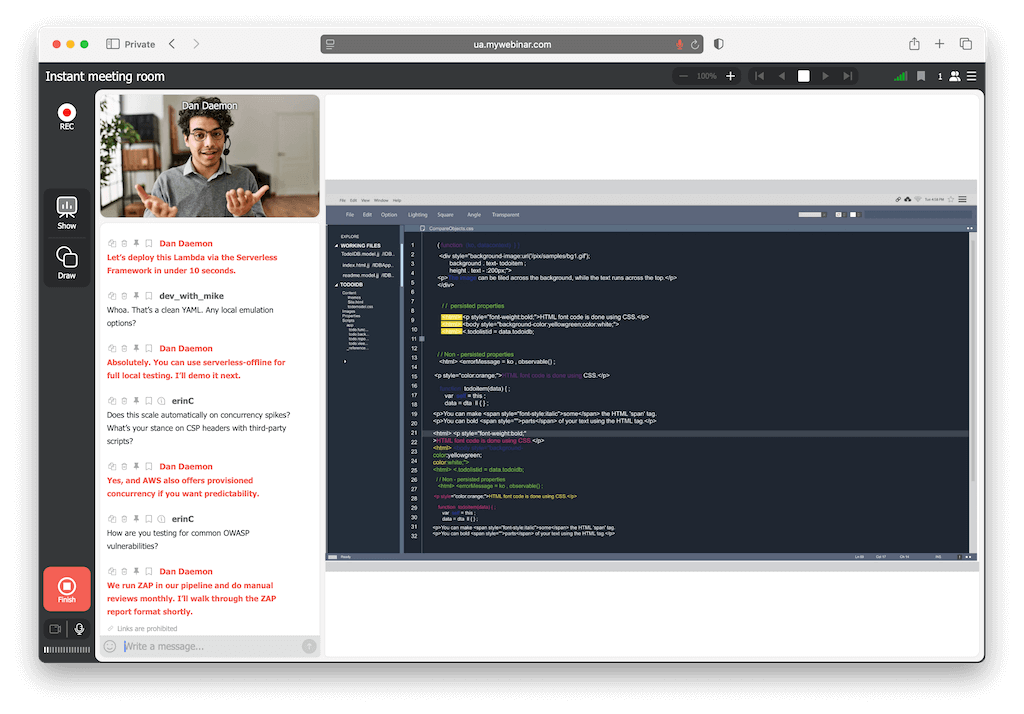
The modern developer landscape is evolving rapidly. Webinars are not just a way to share knowledge—they’re a vital channel for demonstrating real solutions, engaging with developer communities, and building trust. Hosts can share working prototypes, live debug sessions, CI/CD walkthroughs, or security reviews in real time. By leveraging our platform, developers can deliver engaging content to a global audience while focusing on quality and depth. These sessions also serve as reusable content assets—perfect for documentation, internal team training, or client onboarding. Whether you’re running a product launch, training engineers on GitOps workflows, or presenting your open-source toolkit, webinars are your direct bridge to the tech community

Developer-focused webinars offer a scalable, interactive, and professional format to teach tools, share workflows, and engage with global audiences of engineers and tech leads

Run live technical sessions, train software teams, teach best practices, and build a lasting knowledge base. Use our platform to present developer webinars that are interactive, educational, and scalable—no infrastructure worries, just great content delivery
Proudly crafted and hosted in the EU since 2013